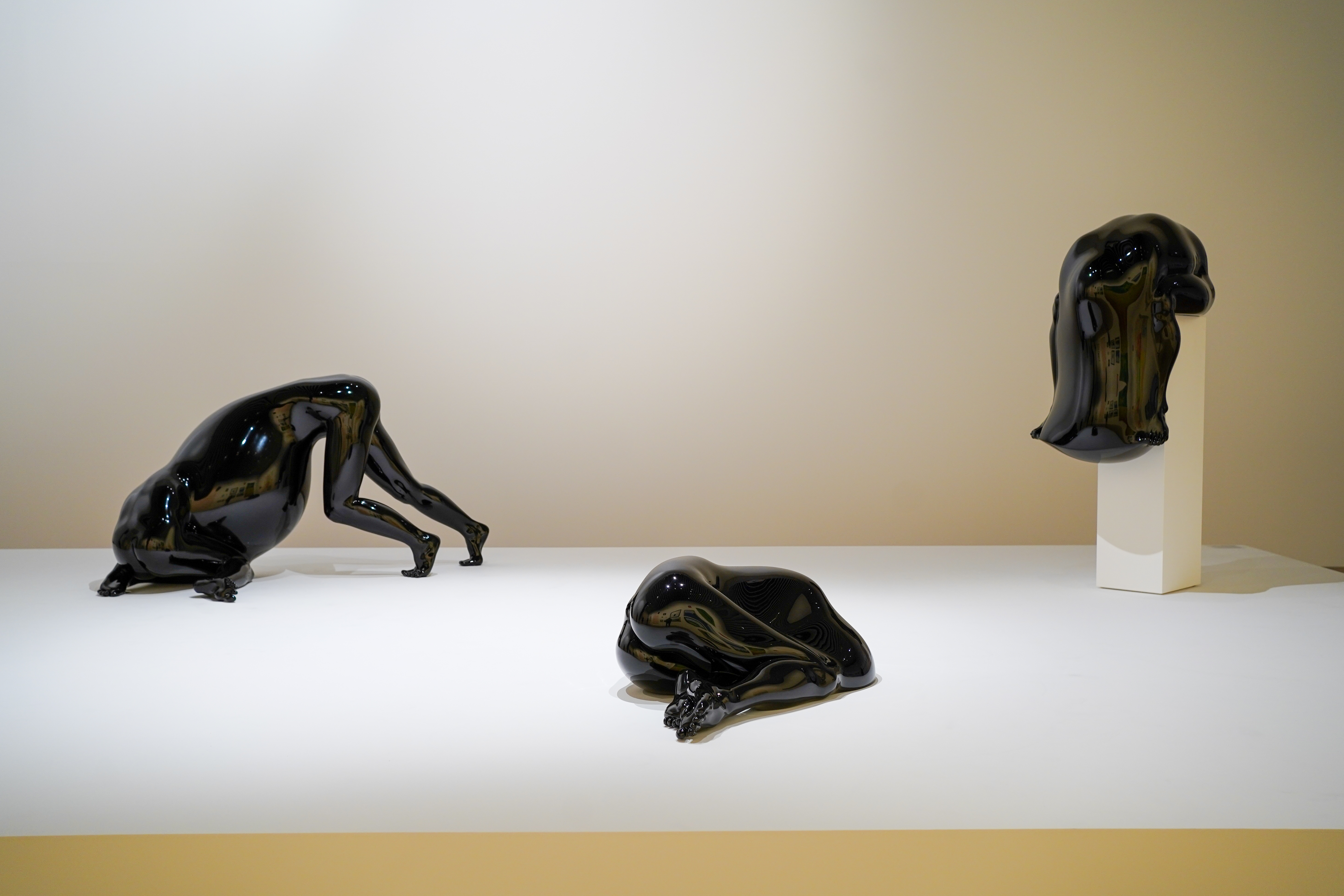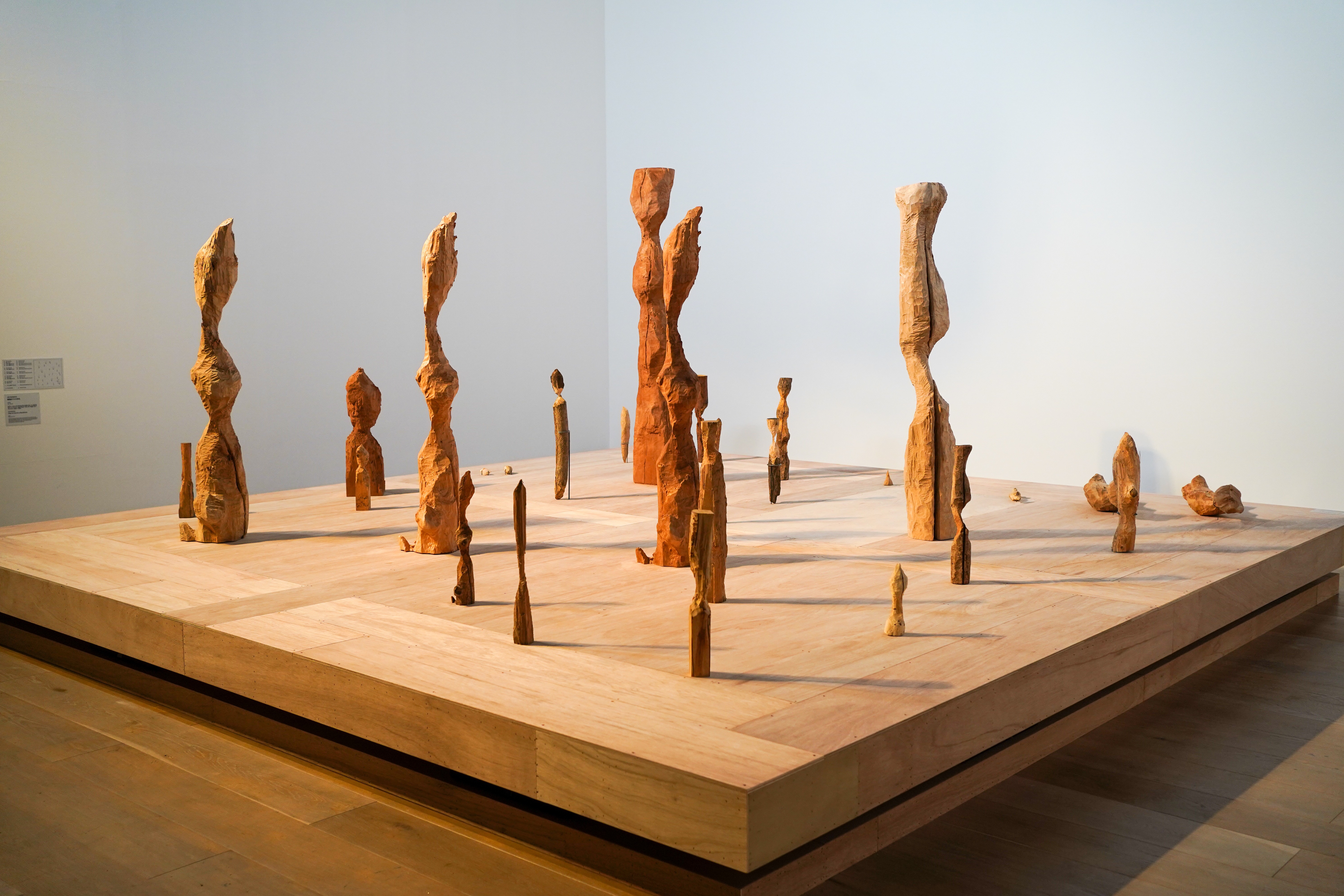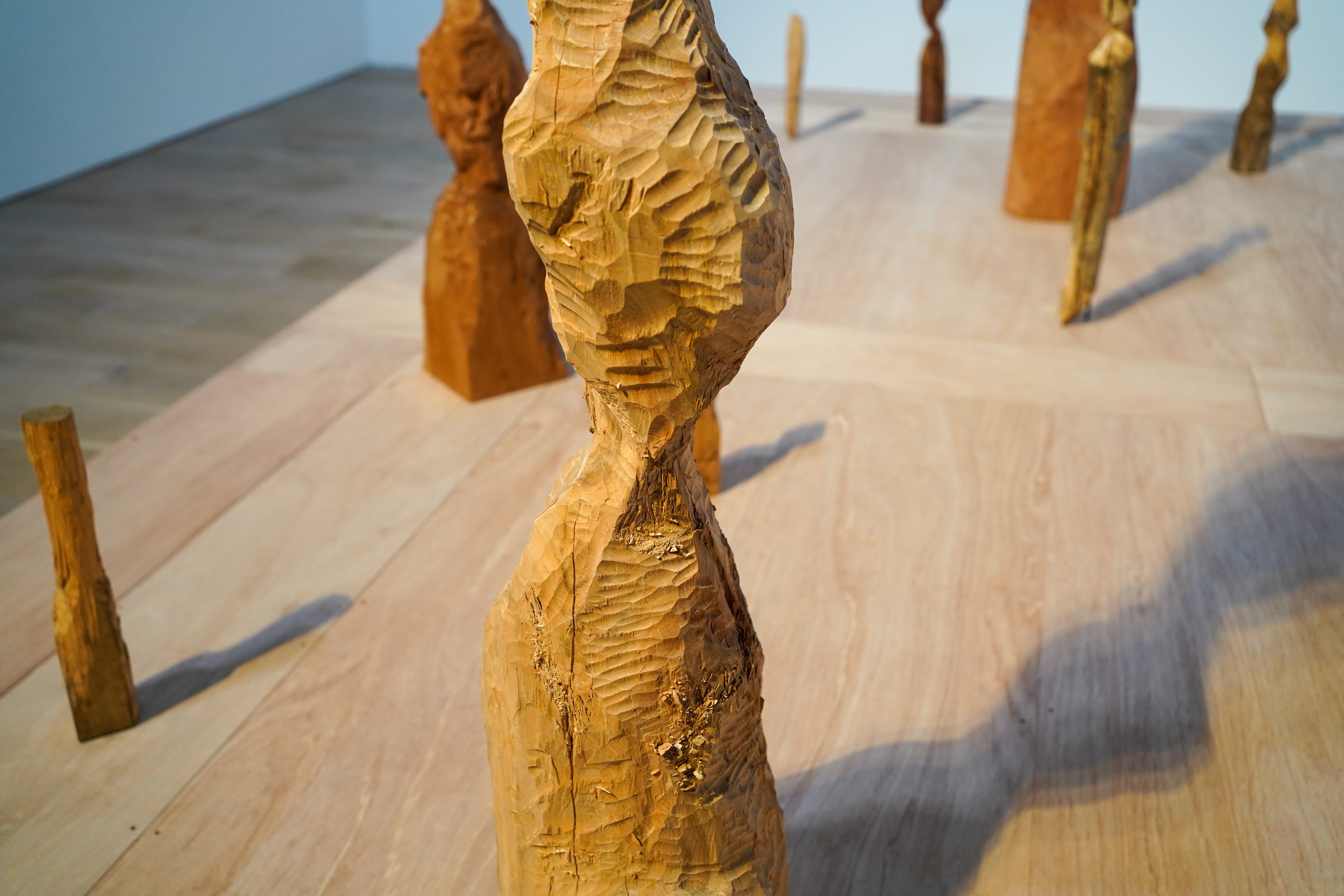“Roppongi Crossing 2022: Coming & Going” Photo Report
SIDE CORE / EVERYDAY HOLIDAY SQUAD exhibition view
“Roppongi Crossing” is a series of co-curated exhibitions held every three years by the Mori Art Museum. Since its launch in 2004, the exhibition has provided a snapshot of the contemporary Japanese art scene and featured promising young artists and internationally established veterans. The crossing between the various themes and curators beyond Mori Art Museum brings out different perspectives and gives overseas curators a chance to learn about the Japanese art scene. This year’s show is co-curated by Kenichi Kondo (Senior Curator, Mori Art Museum), Lena Fritsch (Curator of Modern and Contemporary Art, Ashmolean Museum, University of Oxford), Azusa Hashimoto (Curator, National Museum of Art, Osaka), and Taro Amano (Chief Curator, Tokyo Opera City Art Gallery).
The show features approximately 120 works by 22 Japanese artists: AKI INOMATA, Aoki Chie, Aoki Noe, Han Ishu, Ichihara Etsuko, Iha Linda, Ikeda Hiroshi, Inose Naoya, Ishigaki Katsuko, Ishiuchi Miyako, Kanagawa Shingo, KYUN-CHOME, Matsuda Osamu, Oh Haji, O JUN, Orimoto Tatsumi, Shindo Fuyuka, SIDE CORE / EVERYDAY HOLIDAY SQUAD, Takeuchi Kota, Tamayama Takuro, yang02, and Yokoyama Nami.
Let’s take a look at a few notable exhibits.

The first “Roppongi Crossing” since the pandemic reacknowledges the changes brought by it and aims to bring back human interaction and reflect on the coexistence of diverse cultures and people in Japan. The three key topics are:
1. Viewing the Familiar Afresh
2. Living with a Variety of Neighbors
3. Shining a Light on Japan’s Cultural Diversity
Although using the pandemic as a starting point for discussion, the works in the exhibition touch upon various topics and unravel the hidden issues of Japanese society. The show opens with paintings of OH JUN, who portrays various encounters and social incidents around him, and Chie Aoki’s lacquer sculptures inspired by natural phenomena. Black polished sculptures express the nature of human existence and conjure the image of isolation humanity faced during the pandemic.


The pandemic also changed our interactions with others - keeping us apart and bringing us together remotely. Curator Azusa Hashimoto noted, “the words’ diversity’ and ‘LGBTQ+’ have been used more often since the Olympics, but the works selected for this exhibition show more invisible differences that are often overshadowed by such terms.”
Shingo Kanagawa presents the “for a while” series, which features portraits of his then-missing aunt. One of the unique characteristics of this series is the absence of a theme or story. Due to Kanagawa and his aunt sharing very few memories, in a way, each photograph transcends the explanations and any form of text.

The drastic decrease in international tourism unmasked the previously overlooked existence of people with different backgrounds and ethnicities in Japan. Okinawan artists Katsuko Ishigaki and Linda Iha also presented works depicting the complex Okinawan history and culture. Whether it’s glimpses of U.S. military bases in every landscape or the cultural differences inside a family, each work portrays the multilayered reality of today’s Okinawa.


A peculiar take on the changes brought by the pandemic can be found in the installation “Future SUSHI” by Etsuko Ichihara. Yang02 takes another humorous and ironic approach in his installation based on the idea of the warehouse. The automated work sarcastically reflects on the fact that the art industry remains analog and hints at the spread of capitalism.


Visually and audibly striking installations are presented by younger artists and artists group. Takuro Tamayama, whose installation is also on view at the neighborhood National Art Center, presents an overwhelming red environment that challenges the viewers’ perception. SIDE CORE / EVERYDAY HOLIDAY SQUAD also shows the large-scale installation made of construction equipment and wear.


Continuing the theme of striking visuals, the “Shape of Your Words” series by Nami Yokoyama attracts viewers’ attention with bold colors and extraordinary resemblance to photography. Yokoyama’s friends and family wrote the words in the paintings, making the message personal and powerful.

The veterans of the Japanese art scene also displayed their representative works. Tatsumi Orimoto presents photographs and videos from his “Grandmother’s Lunch,” where he invites and entertains grandmothers in various parts of the world. The humorous and heartwarming “Bread Man” performance is Orimotos’s way of celebrating the process of aging.

Miyako Ishiuchi shows multiple personal snapshots from her “Moving Away” and “Yokohama Days” series.

The exhibition ends with a research-based exhibition of AKI INOMATA and the newest sculptures of Noe Aoki. INOMATA is well known for her interest in the relationship between humans and non-human creatures. The “How to Carve a Sculpture” installation results from the artist’s research on beavers, who inspired the shapes of sculptures.


“Roppongi Crossing 2022: Coming & Going” touches upon themes beyond the pandemic - diversity, ethnicity, capitalism, rapidly aging society, Great East Japan Earthquake, and more. The works featured in the exhibition are personal yet succeed in portraying modern Japanese society and its art scene. The exhibition is open at the Mori Art Museum until March 26, 2023.

Alena Haisaki
Alena Haisaki



